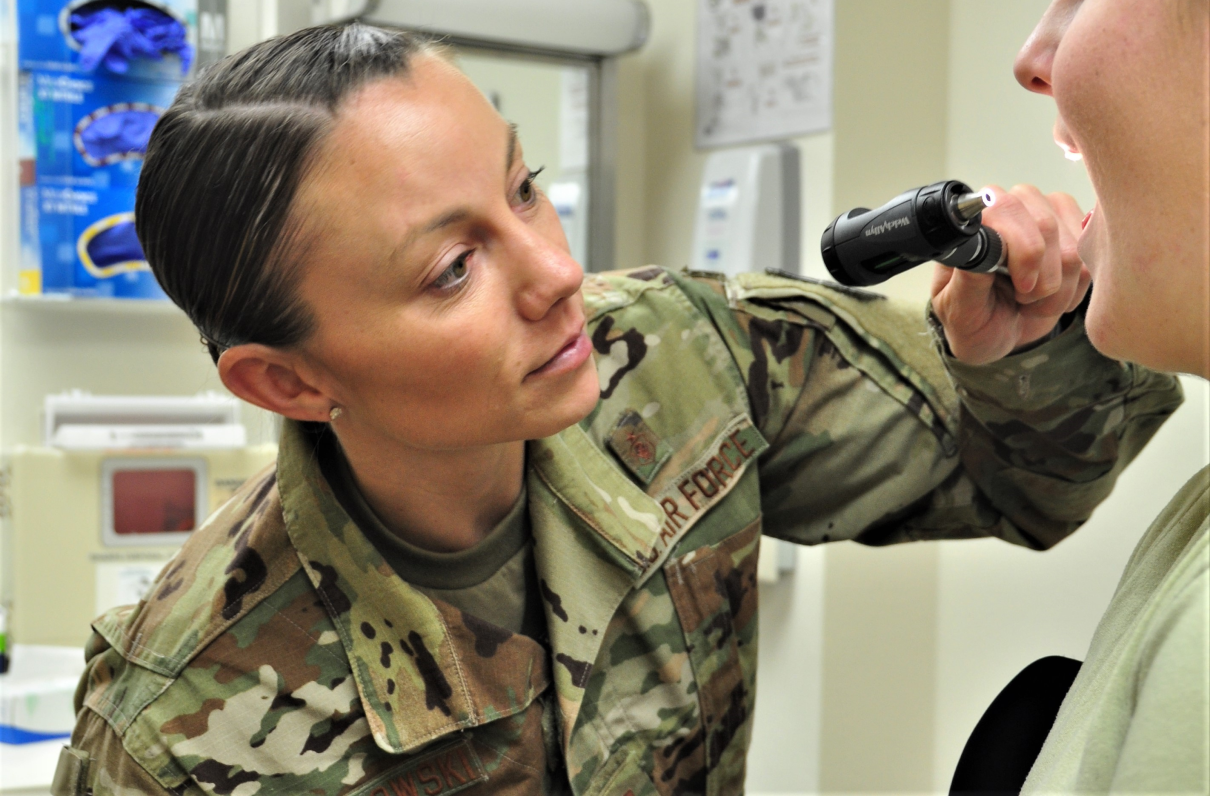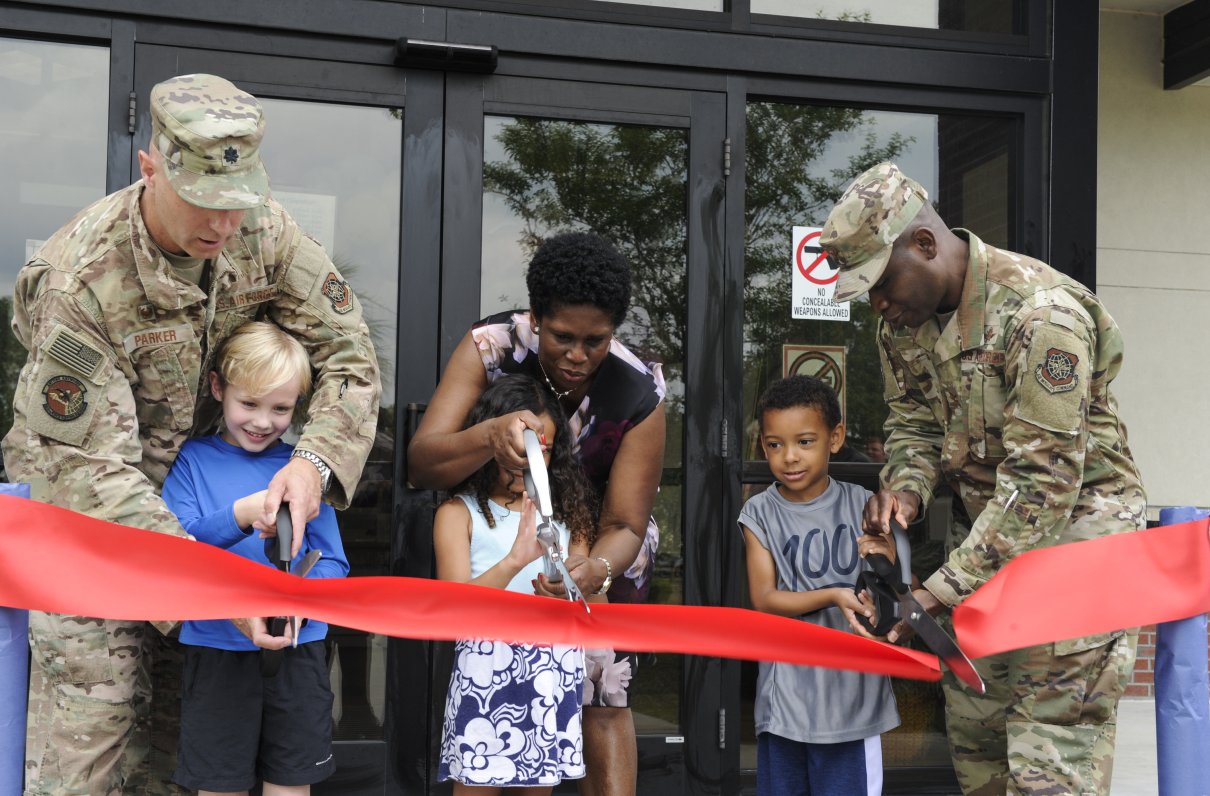Note from MOAA: This 2020 news article is about a realignment plan that has been altered since its publication. For a 2022 update, click here.
Approximately 84,000 active duty family members and 110,000 military retiree beneficiaries will be impacted by military treatment facility (MTF) downsizing proposed in a DoD report to Congress released Feb. 19.
In a phone call the morning of the release, senior DoD officials assured MOAA and other advocacy groups they are committed to maintaining access to care for all beneficiaries via a deliberate process and robust analysis of civilian TRICARE network capacity. However, MOAA remains concerned about the potential impacts on military families, retirees and their families, and survivors.
The Section 703 report is part of comprehensive military health system (MHS) reform legislation that was passed with the FY 2017 National Defense Authorization Act (NDAA). Congress, concerned that the MHS has prioritized the delivery of peacetime health care to the detriment of its combat casualty care capability, mandated several changes to the system aimed at maintaining uniformed medical providers’ critical wartime medical readiness skills.
While MOAA supports the objective of enhanced medical readiness, we fear some beneficiaries may encounter access challenges when seeking civilian care – despite DoD’s best efforts to ensure adequate medical capacity in communities surrounding downsized MTFs. Retirees and their families transitioned to civilian care will also face higher out-of-pocket costs via copays ranging from $20 for primary care visits to $31 for specialty care visits and $62 for emergency room services.
Beneficiaries who see their medical facility on the list of impacted MTFs are probably wondering what happens next. In some instances, these facilities have already reduced the scope of their services, and the report’s analysis simply supports previous decisions. For the others, there will be no immediate changes; MOAA will provide updated information on next steps as soon as we learn more.
[RELATED: Military Families Need a Safety Net During Military Health System Reform]
We are also following up with DHA to better understand the relationship between proposed medical billet cuts and MTF restructuring. According to senior DoD officials, these are distinct and separate proposals, initiated on separate tracks but clearly interrelated. MOAA was told that the detailed analysis, metrics, and mitigation plans mandated by the FY 2020 NDAA, Section 719, will be completed before any MTF restructuring is implemented.
MOAA is committed to ensuring military families, retirees, and survivors maintain access to high quality care without facing barriers related to costs. We are reviewing the report and preparing MOAA’s response, but we need your help! Please share your concerns about how these changes will impact your family by emailing us at legis@moaa.org.
Here’s a breakdown of the facility changes outlined in the report. Many MTFs will transition to active duty-only and occupational health clinics (AD/OHs). However, these facilities are projected to maintain their existing pharmacy workload, including filling prescriptions for non-active duty beneficiaries.
(Download the below list as a printable PDF from Military.com here.)
Active Duty Only
Facilities scheduled to limit patients to active duty servicemembers:
Alabama: Maxwell AFB outpatient facility; Redstone Arsenal outpatient facility.
California: Branch Health Clinic San Onofre
Connecticut: Naval Branch Health Clinic Groton (will continue to see active duty family members)
Delaware: Dover AFB outpatient facility
Florida: Army Health Clinic SOUTHCOM outpatient facility*; MacDill AFB outpatient facility; Patrick AFB outpatient facility
Georgia: Naval Branch Health Clinic Albany outpatient facility*; Robins AFB outpatient facility
Illinois: Rock Island Arsenal outpatient facility*
Louisiana: Barksdale AFB outpatient facility; Naval Branch Health Clinic Belle Chasse*
Maryland: Barquist Army Health Clinic outpatient facility (Fort Detrick)*; Branch Health Clinic Indian Head outpatient facility; Kirk Army Health Center outpatient facility (Aberdeen Proving Ground); Naval Health Clinic Patuxent River outpatient facility
Massachusetts: Hanscom AFB outpatient facility
Mississippi: Naval Branch Health Clinic Meridian outpatient facility*
New Hampshire: Naval Branch Health Clinic Portsmouth (clinic in Kittery, Maine)
New Jersey: Branch Health Clinic Colts Neck outpatient facility (NWS Earle); JB McGuire-Dix-Lakehurst outpatient facility
North Carolina: Joel Health Clinic outpatient facility and Robinson Health Clinic, both at Fort Bragg
Pennsylvania: Fillmore Army Health Clinic (New Cumberland) outpatient facility*
Rhode Island: Naval Health Clinic New England (Newport)
Tennessee: Naval Branch Health Clinic Mid-South outpatient facility
Texas: Dyess AFB outpatient facility; Goodfellow AFB outpatient facility; Branch Health Clinic Corpus Christi outpatient facility
Virginia: Kenner Army Health Clinic outpatient facility (Fort Lee); Naval Branch Health Clinic Dahlgren outpatient facility
Note: Facilities marked with an asterisk (*) may enroll active duty family members “as necessary to round out the physician panels and maintain readiness,” per the report.
Active Duty Only: In Process or In Place
Facilities already limiting patients to active duty servicemembers, or in the process of doing do, in realignments supported by the report:
California: Army Health Clinic Monterey
Colorado: Robinson-Carson outpatient clinic (Fort Carson)
Kansas: Farrelly Health Clinic (Fort Riley)
Texas: Charles Thomas Moore Health Clinic (Fort Hood)
Washington: Okubo Medical Home (JB Lewis-McChord)
Closures
Facilities set to close entirely, or already closed in decisions supported by the report:
California: Department of Behavioral Health, Fort Irwin; Naval Branch Health Clinic Rancho Bernardo.
Florida: MacDill Sabal Park Clinic (Brandon)
Georgia: Community Based Medical Home North Columbus (Fort Benning) outpatient facility
Texas: Fort Hood Medical Home (Building 36000, replaced with sleep center supporting Carl R. Darnall Army Medical Center)
More Changes
Other facilities facing changes:
Hawaii: Tripler Army Medical Center “will be considered for recapitalization of the aging platform,” per the report, “with the final location and capability dependent on further analysis of Hawaii market capabilities and military demand.”
Kansas: The report supports Munson Army Health Clinic’s suspension of surgical capabilities and transition to an outpatient clinic at Fort Leavenworth.
Maryland: Kimbrough Ambulatory Care Clinic (Fort Meade) will transition from an ambulatory surgery center to an outpatient facility.
New Jersey: Naval Branch Health Clinic Lakehurst “will be scoped to Occupational Health, Industrial Hygiene, and Preventive Medicine only,” per the report.
North Carolina: The report supports Naval Medical Center Camp Lejeune’s plan to become a Level II trauma center, to include 24-hour immediate coverage by general surgeons and a range of other capabilities.
South Carolina: Naval Hospital Beaufort to become an ambulatory surgery center and outpatient clinic with medical holding bed capability.
Virginia: JB Langley-Eustis: 633rd Medical Group-Langley to become an ambulatory surgery center and outpatient clinic. McDonald Army Health Clinic is transitioning from an ambulatory surgery center to an outpatient facility “with significant specialty services.”



